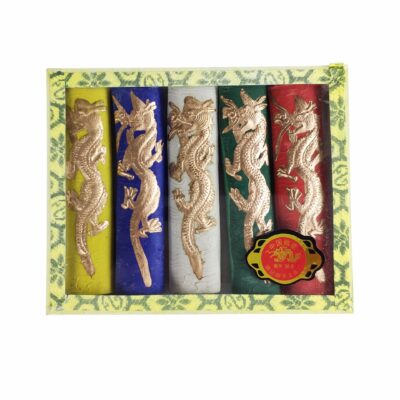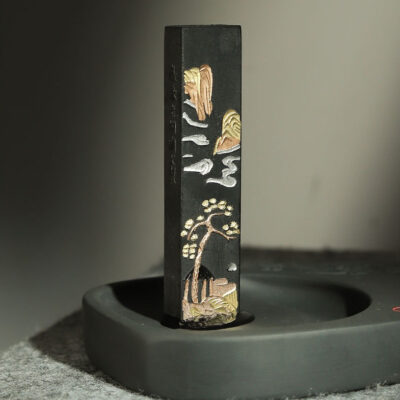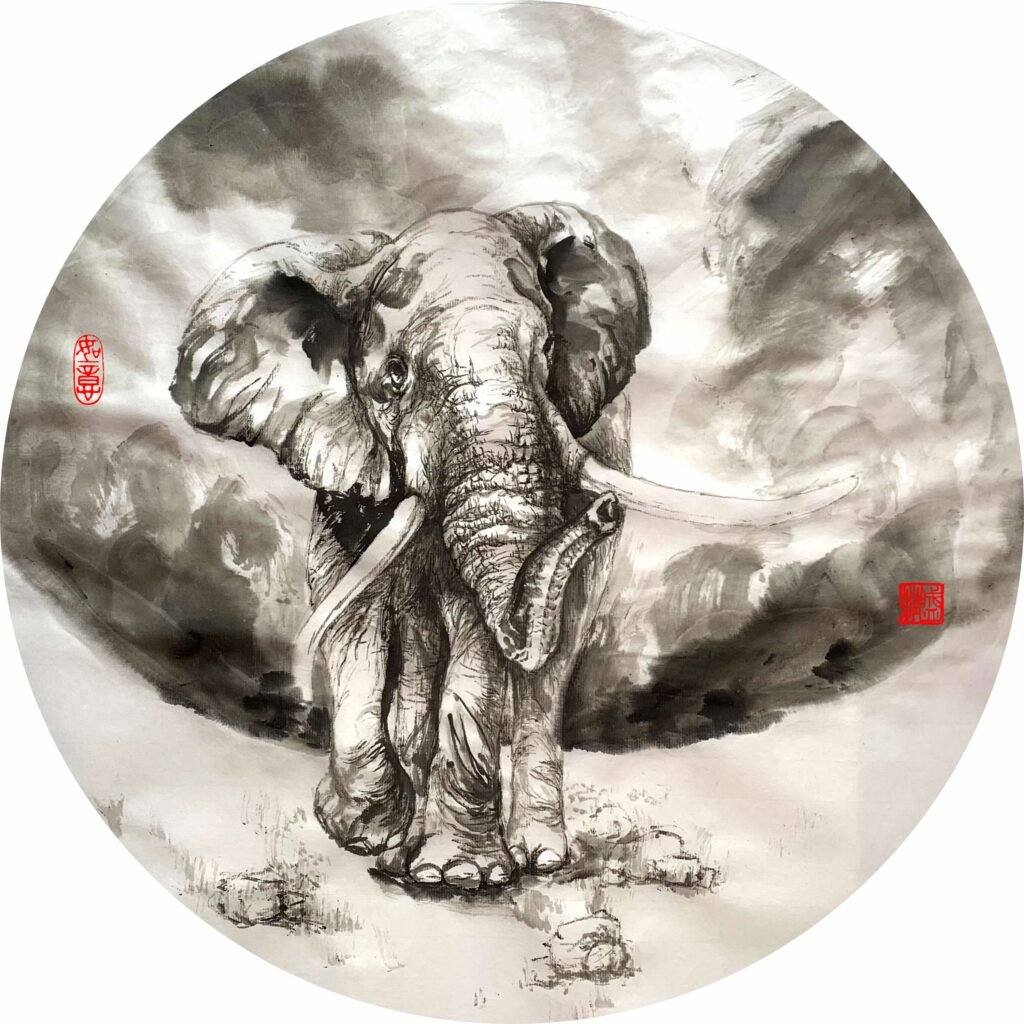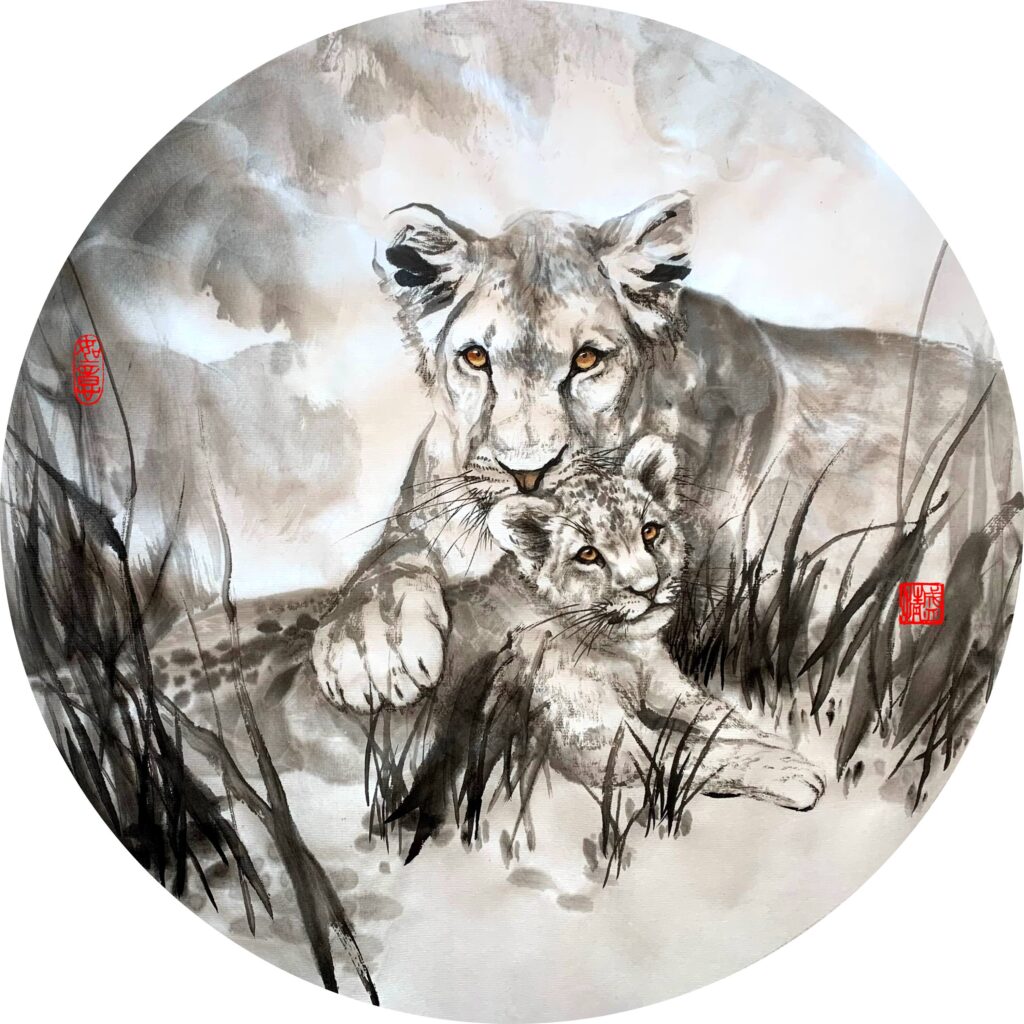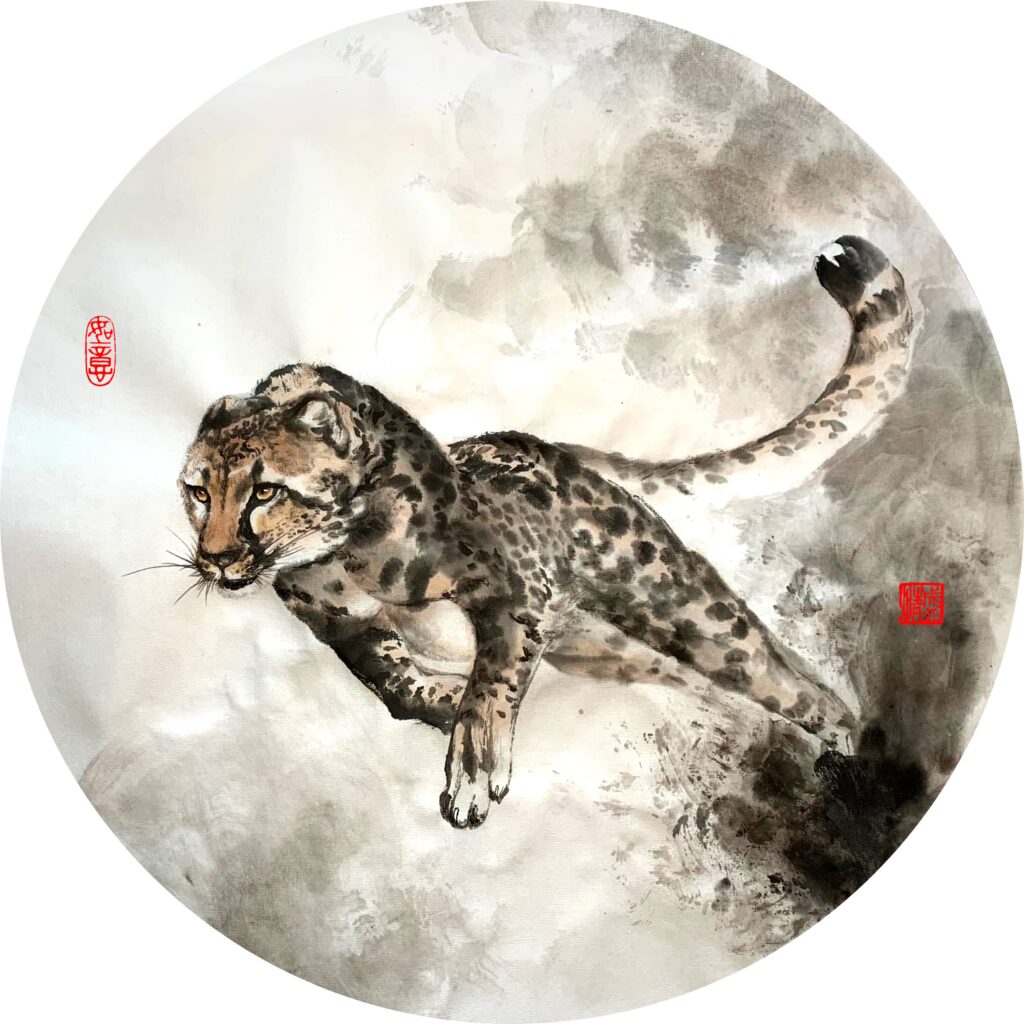Ink came into our lives after the creation of brushes, and in the early days people used natural ink to make markings, but around the Spring Autumn period (770BC-476BC) man-made ink was already in use according to historical findings. In the following periods of time, a great number of remarkable craftsmen arrived on the historical stage and identified their best practices of ink making, some of which is still in record. Ink (墨) generally referred to the black color (黑), which is very clear in the character build, but later it developed into other colors too. Among the various manufactures, An Hui Ink was especially famous.
In the An Hui province, traditionally merchants and trades stood out, the Hui merchants earned their name of being credible and trustworthy. Among their traded items, the high quality ink and paper especially were widely loved, and this location has been the royal appointed one in such supply ever since. This province, An Hui is filled with natural wonders, magnificent mountains, located at the heart of the rich Yangzi river delta, it is full of natural resources and was the birth place of a great number of scholars and artists. The Yellow Mountain resides in this place, and some of the famous Hui Ink was created from these mountains.
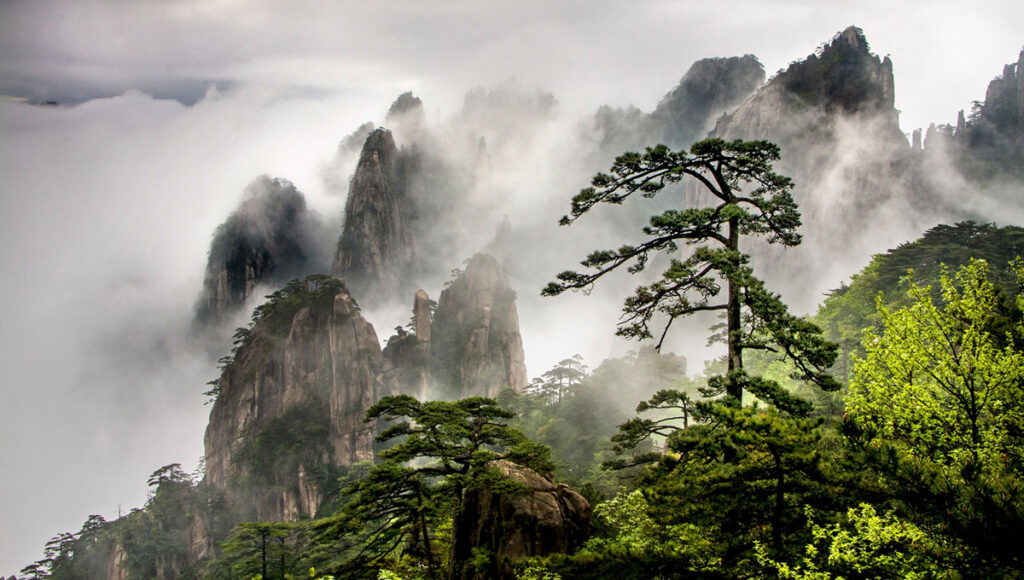
The ink sticks rely mainly on the smoke particles collected from the pine or oil burning, which is mixed with over a thousand herbs, including pearl powder, musk, borneol and many others for the scent. The proportion of these ingredients and the methods are strict trade secrets, but we do know that the making of a single ink stick takes over 1 year, and requires great strength and repeated pounding. Let us start from the beginning, the collection of the pine (sometimes oily) smoke particles.
There are generally two categories of ink sticks, the pine or oil based. They are both dark ink, but the pine kind allows for the creation of more layers, the transparency and the transition is displayed well. The pine from the Yellow Mountain has especially high quality, and the ancient pine smoke ink stick that used the trunks of the pine trees produced particularly wonderful ink. However, now the pine use is limited to the branches, no more trees are harmed anymore, which also reduced the quality subsequently. The oil kind (oil smoke from Jatropha curcas tree, rapeseed, flax seed and so on) gives a powerful shine, almost metallic (purple, black are the best), something unique to this type. The two kinds are preferred for different purposes, neither is superior. For paintings most people prefer pine based ink, the oil ones are mainly used in the coloring stage or calligraphy.


The traditional ink making is a tiring task, wielding the hammer does not make one feel like Thor, but worthy nonetheless. The sticky ink chunks are pounded (over 200 times) into pie shapes, ready for further processing. At this stage they are similar to a good dough, flexible and elastic. From these pies smaller chunks are taken and weighed before being made into a certain shape. The modes are made from very dense wood, but a mode can only be used for around 100 ink sticks only before it needs to be replaced. The last process involves drying, which could last between 4 and 6 months or even longer during the rainy seasons.


Ink sticks have to be ground over ink stones. This is a rather mindful and relaxing process, but only good ink sticks combined with decent ink stones can produce decent ink. A good ink stick or ink stone is a collector’s item, and there are some really luxurious selections on the market. However, the opposite is equally true, the cheap types are as good as concrete, the cheap ink sticks could scratch the ink stones, and the cheap ink stones would waste the ink and your time. In the next post let us take a closer look at the ink stones!
Enjoy such cultural discussions? Have comments? I look forward to hearing from you!
Related Products From Our Shop
Buy Artworks | Learn Brush Painting | Learn Chinese Calligraphy
